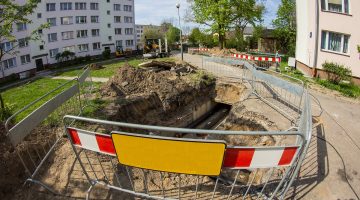DESCRIPTION
Working in trenches and excavations is one of the most dangerous types of construction work out there. If a cave-in occurs and a worker is buried, even partially, there is a very good chance that the worker will be seriously or fatally injured. That is the principal reason that OSHA and Cal-OSHA regulations require construction contractors to designate a competent person to oversee the work and ensure that all excavations are in compliance with the relevant regulations.
Practically speaking, the competent person can be a manager, crew leader, equipment operator or a worker as long as he/she meets the criteria: trained and knowledgeable about the relevant hazards and applicable regulations and authorized to stop the work until the hazards are corrected. This person should also be capable of implementing the necessary safety measures to bring the excavation into compliance with the OSHA safety regulations before permitting workers to continue the work. For example, workers should not be permitted to enter a trench more than five feet deep until a system to protect workers from a cave-in is in place – i.e., sloping, shoring or shielding.
Please note that if a OSHA inspector visits the job site and observes hazardous conditions and/or actions, the designated persons will not be considered “competent” no matter how much training or experience they have. That is why it is so important to designate as the competent person someone who is also mature and responsible enough to take on and faithfully execute the tasks involved, inspect the work at least daily, and, as needed throughout the shift, ensure compliance through the control or elimination of all hazards.
The following topics are covered in this Excavation/Trenching Competent Person training course:

